东西方宗教文化差异(英文版)
- 格式:ppt
- 大小:1.15 MB
- 文档页数:28
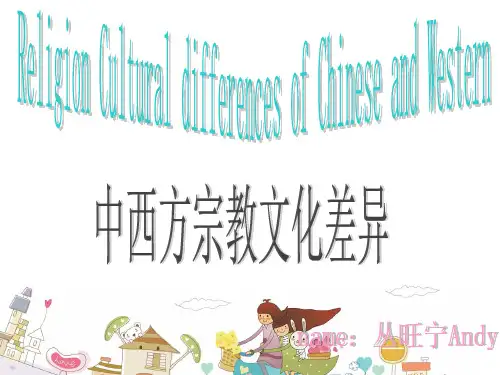
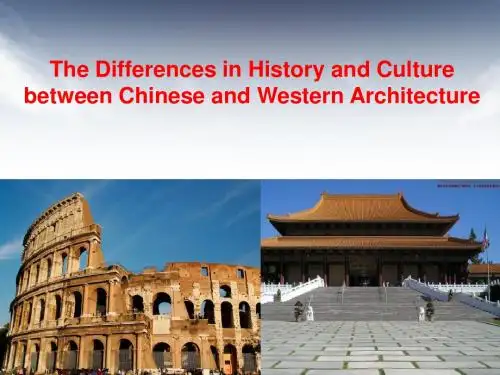
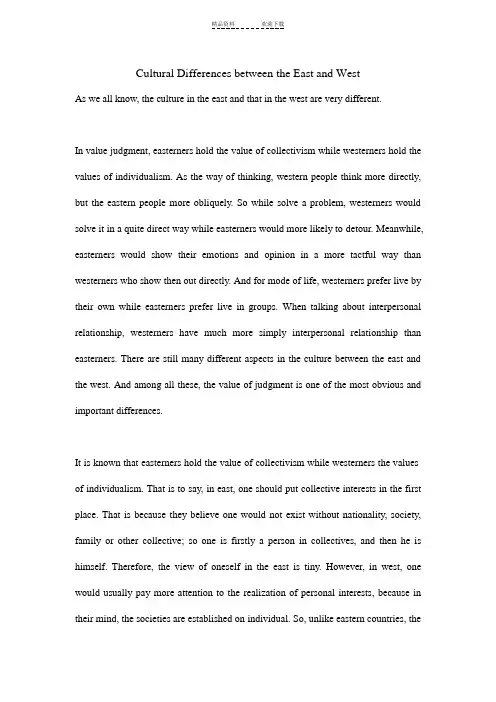
Cultural Differences between the East and WestAs we all know, the culture in the east and that in the west are very different.In value judgment, easterners hold the value of collectivism while westerners hold the values of individualism. As the way of thinking, western people think more directly, but the eastern people more obliquely. So while solve a problem, westerners would solve it in a quite direct way while easterners would more likely to detour. Meanwhile, easterners would show their emotions and opinion in a more tactful way than westerners who show then out directly. And for mode of life, westerners prefer live by their own while easterners prefer live in groups. When talking about interpersonal relationship, westerners have much more simply interpersonal relationship than easterners. There are still many different aspects in the culture between the east and the west. And among all these, the value of judgment is one of the most obvious and important differences.It is known that easterners hold the value of collectivism while westerners the values of individualism. That is to say, in east, one should put collective interests in the first place. That is because they believe one would not exist without nationality, society, family or other collective; so one is firstly a person in collectives, and then he is himself. Therefore, the view of oneself in the east is tiny. However, in west, one would usually pay more attention to the realization of personal interests, because in their mind, the societies are established on individual. So, unlike eastern countries, theview of self is great in western countries.In the past years, millions of people argue that the collectivism and individualism which one is better. They all had their own points, and as for me, they are all reasonable. In one hand, any one of us is living in the collective, on one can live without collective; and as a member of a collective, it is reasonable and necessary to attach importance to the congregate interests. But it does not necessary mean that we should give up all our rational interests, we still have the rights to pursue them. Only when our own interest against the congregate one, should we put the congregate one in the first place. In the other hand, it is right for the individualism stress the expression of individuality, independence, liberty, competition, and self-achievement.A society should admit individual value, so that, the whole society could exert its vitality absolutely. In a word, from my point of view, these two types of value are all meaningful and have their own pros.There are many differences between east and west. Different cultures add a colorful element to the world. The cultural gap should not be the obstacle to the civilization of human being. It ought to be the motivation of our going farther. Besides, we can not judge which type of culture is better in our own point of view, because all culture exits in its meaningful way: they formed, developed and exited in a specific culture and social environment.。
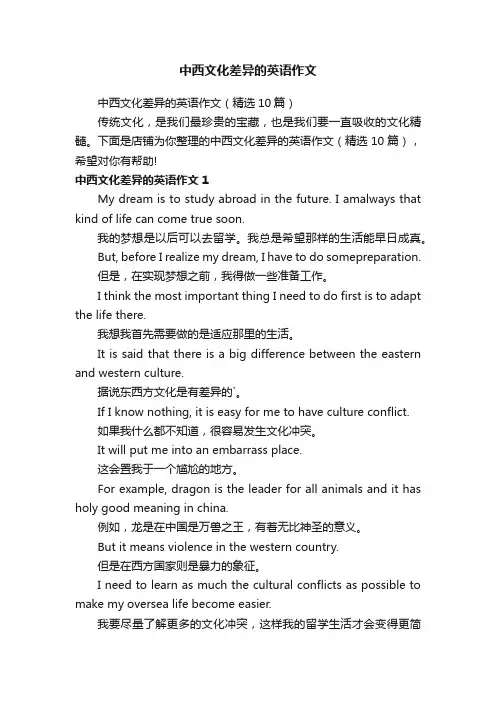
中西文化差异的英语作文中西文化差异的英语作文(精选10篇)传统文化,是我们最珍贵的宝藏,也是我们要一直吸收的文化精髓。
下面是店铺为你整理的中西文化差异的英语作文(精选10篇),希望对你有帮助!中西文化差异的英语作文1My dream is to study abroad in the future. I amalways that kind of life can come true soon.我的梦想是以后可以去留学。
我总是希望那样的生活能早日成真。
But, before I realize my dream, I have to do somepreparation.但是,在实现梦想之前,我得做一些准备工作。
I think the most important thing I need to do first is to adapt the life there.我想我首先需要做的是适应那里的生活。
It is said that there is a big difference between the eastern and western culture.据说东西方文化是有差异的`。
If I know nothing, it is easy for me to have culture conflict.如果我什么都不知道,很容易发生文化冲突。
It will put me into an embarrass place.这会置我于一个尴尬的地方。
For example, dragon is the leader for all animals and it has holy good meaning in china.例如,龙是在中国是万兽之王,有着无比神圣的意义。
But it means violence in the western country.但是在西方国家则是暴力的象征。
I need to learn as much the cultural conflicts as possible to make my oversea life become easier.我要尽量了解更多的文化冲突,这样我的留学生活才会变得更简单。
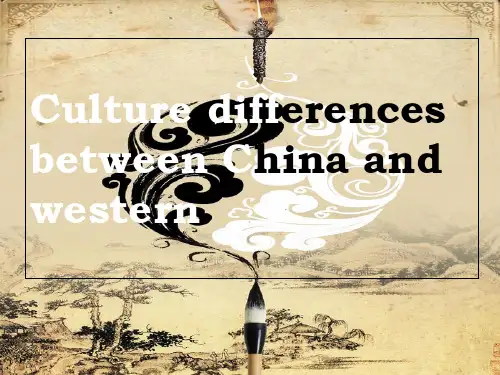


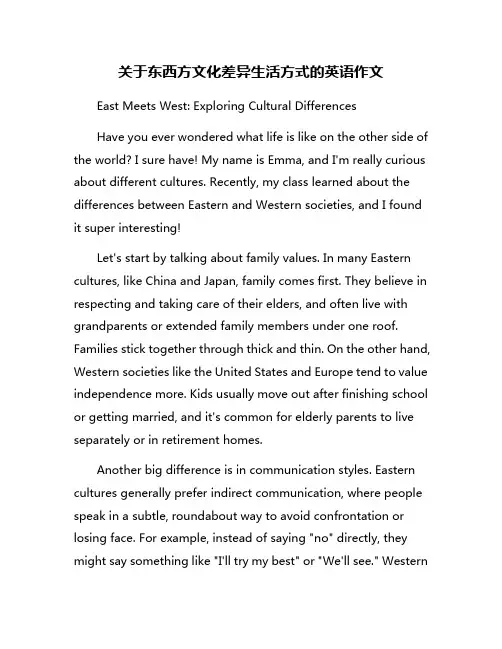
关于东西方文化差异生活方式的英语作文East Meets West: Exploring Cultural DifferencesHave you ever wondered what life is like on the other side of the world? I sure have! My name is Emma, and I'm really curious about different cultures. Recently, my class learned about the differences between Eastern and Western societies, and I found it super interesting!Let's start by talking about family values. In many Eastern cultures, like China and Japan, family comes first. They believe in respecting and taking care of their elders, and often live with grandparents or extended family members under one roof. Families stick together through thick and thin. On the other hand, Western societies like the United States and Europe tend to value independence more. Kids usually move out after finishing school or getting married, and it's common for elderly parents to live separately or in retirement homes.Another big difference is in communication styles. Eastern cultures generally prefer indirect communication, where people speak in a subtle, roundabout way to avoid confrontation or losing face. For example, instead of saying "no" directly, they might say something like "I'll try my best" or "We'll see." Westerncultures, on the other hand, tend to be more direct and straightforward in their communication.Let's talk about food next – one of my favorite topics! Eastern cuisine often includes rice as a staple, along with lots of vegetables, seafood, and soy-based products like tofu. They also use chopsticks for eating. Western diets, meanwhile, are more centered around bread, meat, and dairy products. They typically use forks, knives, and spoons for eating.Speaking of food, table manners are quite different too. In many Eastern cultures, it's considered polite to slurp your noodles or soup loudly, as it shows you're enjoying the meal. But in Western cultures, loud slurping is seen as rude and impolite. Isn't that interesting?Another cool difference is in clothing and fashion. Traditional Eastern attire, like kimonos in Japan or saris in India, are often loose and flowing, with intricate designs and bright colors. Western fashion, on the other hand, tends to be more form-fitting and understated, with classic styles like jeans andt-shirts being popular.Now, let's talk about celebrations and holidays. Many Eastern festivals are based on lunar calendars and have deep connections to nature, like the Chinese New Year or the JapaneseCherry Blossom Festival. Western holidays, like Christmas and Easter, often have religious origins and are more tied to specific dates on the solar calendar.Ah, and we can't forget about education! In many Eastern societies, education is highly valued and seen as the key to success. Students often attend extra tutoring sessions and cram schools, and there's a lot of emphasis on academic achievement and test scores. Western education systems, while still valuing education, tend to focus more on well-rounded development, with a balance between academics, sports, and extracurricular activities.Lastly, let's talk about the concept of time. Eastern cultures generally have a more flexible and fluid approach to time, where being a little late is often acceptable. Life moves at a slower, more relaxed pace. Western societies, on the other hand, tend to be more punctual and time-oriented, with a greater emphasis on schedules and deadlines.Phew, that's a lot of differences! But you know what? Despite all these contrasts, I think there's beauty in diversity. Learning about other cultures helps us appreciate the richness of our world and become more understanding and open-minded.At the end of the day, we're all human beings, sharing this planet together. Sure, we might have different ways of doing things, but deep down, we all want happiness, love, and a fulfilling life. By embracing our differences and learning from each other, we can create a more connected and compassionate world.So, the next time you encounter someone from a different cultural background, remember to keep an open mind and a curious heart. Ask questions, share stories, and find common ground. Who knows, you might just make a new friend and learn something amazing in the process!。
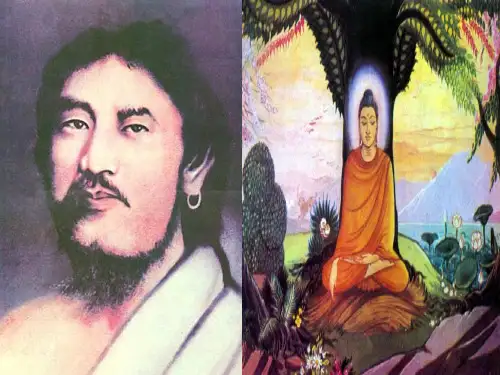
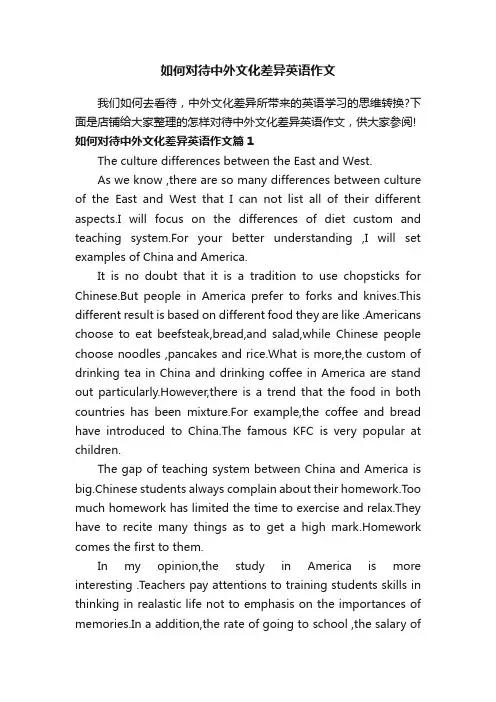
如何对待中外文化差异英语作文我们如何去看待,中外文化差异所带来的英语学习的思维转换?下面是店铺给大家整理的怎样对待中外文化差异英语作文,供大家参阅! 如何对待中外文化差异英语作文篇1The culture differences between the East and West.As we know ,there are so many differences between culture of the East and West that I can not list all of their different aspects.I will focus on the differences of diet custom and teaching system.For your better understanding ,I will set examples of China and America.It is no doubt that it is a tradition to use chopsticks for Chinese.But people in America prefer to forks and knives.This different result is based on different food they are like .Americans choose to eat beefsteak,bread,and salad,while Chinese people choose noodles ,pancakes and rice.What is more,the custom of drinking tea in China and drinking coffee in America are stand out particularly.However,there is a trend that the food in both countries has been mixture.For example,the coffee and bread have introduced to China.The famous KFC is very popular at children.The gap of teaching system between China and America is big.Chinese students always complain about their homework.Too much homework has limited the time to exercise and relax.They have to recite many things as to get a high mark.Homework comes the first to them.In my opinion,the study in America is more interesting .Teachers pay attentions to training students skills in thinking in realastic life not to emphasis on the importances of memories.In a addition,the rate of going to school ,the salary ofteaching ,and the job of gruduates are quite different,too.I should say that Chima government should make great efforts to improve its teaching syetem.I am also expect to be one day ,the West give more cheers to our country.如何对待中外文化差异英语作文篇2Today,lots of people are affected by western culture especially the new generation who born after 1990s.In my opinion,some of western culture is good but some of them are not suited.Learning western culture can let us know about what is the western custom and what differnets between chinese and western.because of comparison we can learn the positive sides such as more confident,independent.On the other side,the negative sides we should not learn.for example,some high school student even younger fall in love with others.They spend much time to do it and forget what more important things they really need to do in that moment.Indeed,every coins have two sides.how to do deal with it,I think let time make the answer.如何对待中外文化差异英语作文篇3Culture, according to the definition given by Hofstede, is the collective mental programming of the people in an environment, conditioned by the same education and life experience. Therefore, there are differences between various nations or regions, because people are affected by education, society and work experience. Take the cultural difference between the East and the West as the example, China is a country that endures high power distance while America endures lower power distance. Therefore, status symbol is very important for Chinese and a superior having the privilege is a matter of course. But people in America think that they are all equal. Besides, the westerns are individualistic while the easterners are morecollectivistic. In individualistic societies, people focus on their own values and needs, relying on individual efforts to serve their interests. In the collectivistic nations, people combine themselves into one or several communities, finding their own place in the group and they mentally rely on the community, so harmony seems important in those nations. There are three main differences between the East and the West, namely uncertainty avoidance index, masculine versus femininity and long vs. short term orientation.根据霍夫斯泰德对文化所下的定义,文化是在同一个环境中的人们所具有的“共同的心理程序”,是由相同的教育背景和生活经历所决定的。
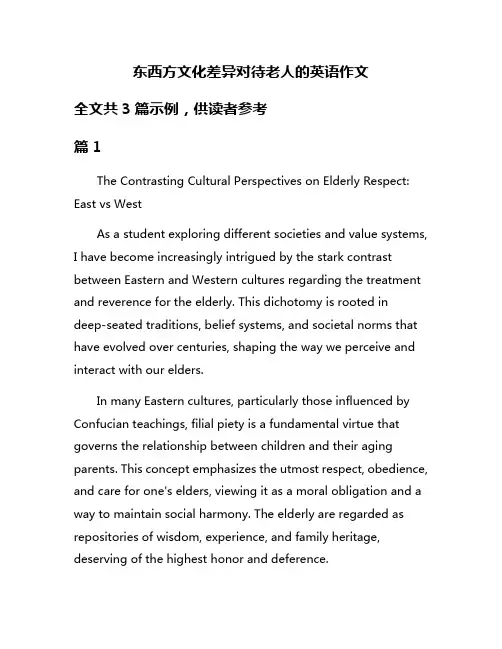
东西方文化差异对待老人的英语作文全文共3篇示例,供读者参考篇1The Contrasting Cultural Perspectives on Elderly Respect: East vs WestAs a student exploring different societies and value systems, I have become increasingly intrigued by the stark contrast between Eastern and Western cultures regarding the treatment and reverence for the elderly. This dichotomy is rooted indeep-seated traditions, belief systems, and societal norms that have evolved over centuries, shaping the way we perceive and interact with our elders.In many Eastern cultures, particularly those influenced by Confucian teachings, filial piety is a fundamental virtue that governs the relationship between children and their aging parents. This concept emphasizes the utmost respect, obedience, and care for one's elders, viewing it as a moral obligation and a way to maintain social harmony. The elderly are regarded as repositories of wisdom, experience, and family heritage, deserving of the highest honor and deference.Take, for instance, the cultural landscape of countries like China, Japan, and Korea, where multi-generational households are common, and the presence of grandparents is cherished. It is not uncommon for adult children to assume the responsibility of caring for their aged parents, both financially and emotionally. This practice is deeply ingrained in the collective psyche, stemming from the belief that one's elders have sacrificed and toiled for the well-being of the family, and it is the duty of the younger generation to reciprocate that devotion.In contrast, Western societies, influenced by individualistic values and the pursuit of personal autonomy, often approach the concept of aging from a different perspective. While respect for the elderly is certainly valued, the emphasis is more on fostering independence and self-reliance. The notion of "aging gracefully" is celebrated, and the elderly are encouraged to maintain an active lifestyle and pursue their personal interests, rather than being solely reliant on their families.In many Western countries, such as the United States and various European nations, the concept of retirement communities and assisted living facilities has gained prominence. These establishments aim to provide a sense of community, social engagement, and specialized care tailored to the needs ofthe elderly. While this approach may be perceived as promoting independence, it has also raised concerns about potential isolation and a lack of intergenerational bonding.Moreover, the Western emphasis on individual autonomy can sometimes lead to a perception of the elderly as a burden, particularly in societies where the nuclear family structure is prevalent. This mindset can inadvertently contribute to a sense of marginalization and neglect for the aging population, as the demands of modern life and career pursuits often take precedence.It is important to note, however, that these cultural differences are not absolute, and exceptions exist within both Eastern and Western societies. Globalization and the exchange of ideas have led to a gradual blending of perspectives, with some Eastern societies embracing more Western-influenced approaches, and vice versa.Ultimately, the contrasting cultural views on elderly respect present both strengths and challenges. The Eastern emphasis on filial piety fosters a strong sense of community, intergenerational bonding, and a deep-rooted respect for the wisdom of elders. However, it can also place immense pressure on caregivers and potentially hinder the autonomy of the elderly.Conversely, the Western focus on independence andself-reliance can empower the elderly to maintain an active and fulfilling lifestyle, but it also runs the risk of neglecting the invaluable contributions and experiences of our elders, leading to potential isolation and a erosion of intergenerational connections.As a student examining these cultural nuances, I believe that a balanced approach, drawing upon the positive aspects of both perspectives, is crucial for fostering a truly inclusive and respectful society for our aging population. By embracing the Eastern reverence for elders while promoting their autonomy and individual pursuits, we can create an environment where the elderly feel valued, supported, and empowered to live their lives to the fullest.Ultimately, the way we treat our elders is a reflection of our collective values and the compassion we hold for those who have paved the way for our present. By learning from the richness of diverse cultural traditions and finding common ground, we can forge a path that honors the dignity and contributions of the elderly, fostering a society that truly values and cherishes its most experienced members.篇2The Contrasting Cultural Attitudes Towards the Elderly in the East and WestAs a student from an Eastern cultural background, I have always been taught to respect my elders and treat them with the utmost care, love and devotion. This strong emphasis on filial piety and venerating our seniors is deeply ingrained in many Asian cultures and societies. However, through my interactions with friends from Western countries and studying abroad, I've come to realize that there exist stark differences in how the elderly are viewed and treated across the Eastern and Western worlds.In traditional Eastern cultures, the elderly hold a revered position in society and within family units. They are considered the pillars of wisdom, the repositories of ancestral knowledge and traditions that must be passed down through generations. Caring for one's aging parents is seen as not just a moral obligation, but a profound act of gratitude for giving us life and nurturing us through childhood. The concept of sending one's parents to nursing homes or old age facilities is almost unthinkable in many Asian communities, as it is perceived as an abandonment of filial responsibilities.This deep veneration for the elderly is manifested in countless ways across Eastern cultures. In China, it is common to see old-age parents living together with their children's families, with the grandparents often playing an active role in household duties and childcare. The elderly are constantly doted upon, with the younger generations seeking their advice and blessings on important life decisions. In India, old age is equated with the final stage of life's journey – the "Vanaprastha" stage of gradual detachment and wisdom garnered through experiences. The touching imagery of the elderly being carried on palanquins by their sons during religious rituals symbolizes the great honor bestowed upon them.Contrast this with prevailing Western attitudes, where independence, individualism and self-reliance are prized above all. Many elderly individuals in Western societies prefer to live out their twilight years on their own terms, without being a perceived "burden" on their children. Retirement communities, assisted living facilities and nursing homes play a major role in elder care, with nuclear family setups being the norm. While this ensures a level of autonomy for seniors, there is also a shadow of loneliness and isolation that comes with this independence, particularly as health declines with advancing age.The cultural differences extend beyond just living arrangements and care models. In the East, wrinkles are embraced as visible emblems of the wisdom that comes with age and life experiences. Old age is almost celebrated, with each silver hair and laugh line seen as a badge of honor hard-earned over the decades. Many cosmetic companies in Asia market "anti-aging" products by using older, confident models with greying hair to promote an elegant, sophisticated look. This stands in sharp contrast to Western obsessions with perpetual youth and erasing any visible signs of aging through cosmetic procedures, hair dyes and skincare regimes.At the same time, it would be overly simplistic to paint all Western societies with the same brush. Many Native American and Hispanic communities still maintain strongmulti-generational family ties, with elders being the anchors of extended households. There is increasing pushback in recent years against the stereotype of shunting off the old to impersonal care facilities. More young people are exploring ways to keep their parents engaged and active through senior living communities or having them live in annexe units adjoining the family home. There is also a growing appreciation for the shared wisdom, life experiences and sense of connectedness that theelderly can provide in today's rapidly changing, fragmented world.Conversely, rapid modernization, urbanization and the dilution of traditional values have led to an erosion of the exalted status of the elderly in certain parts of Asia. The harsh realities of juggling work with caring for aged parents have forced many to turn to institutionalized elder care as a necessity rather than a choice. There have been shocking reports of elderly abuse and neglect in several Asian nations, forcing governments to introduce laws to protect the rights of seniors. The economic and societal costs of providing for a rapidly greying population have also become major policy challenges for Asian governments.Ultimately, while cultural differences in Eastern and Western attitudes towards the elderly are undeniable, the underlying root of the issue is the same across the globe – how do we ensure that our seniors live out their twilight years with dignity, love and financial security? How can we benefit from their lifetime of accumulated experiences while also respecting their autonomy? These are complex intergenerational questions that every society on our increasingly interconnected planet will have to grapple with.Perhaps the solution lies in borrowing the best practices from both the East and the West. We could learn from Eastern cultures about reinstating the cherished status of elders, honoring their wisdom and striving to keep the family unit together as far as possible through multi-generational homes and community care models. At the same time, we could emulate aspects of Western societies that emphasize individual choice, mobility and active lifestyles for the elderly, along with quality institutional care facilities for those who need or prefer it.By bridging these cultural divides through open minds and cross-pollination of ideas, we may be able to craft a beautiful hybrid approach – one that nurtures intergenerational bonds while guaranteeing our elders' autonomy. One that makes our seniors feel endlessly loved and cared for, yet independent and self-actualized. For are they not the roots from which the mighty trunks of our societies have arisen? It is our sacred duty to ensure their twilight years are suffused with the same adoration and respect that their remarkable life journeys deserve.篇3Cultural Differences in Treating the Elderly: An East vs West PerspectiveAs a student, I have had the opportunity to learn about different cultures and how they approach various aspects of life. One area where I have noticed significant differences is in the treatment and perception of the elderly. In this essay, I will explore the contrasting views and practices between Eastern and Western societies when it comes to caring for and respecting the older generation.In many Eastern cultures, particularly those influenced by Confucian teachings, filial piety – the virtue of respect and obedience towards one's parents and elders – is deeply ingrained. This concept places a strong emphasis on honoring and caring for the elderly, as they are seen as repositories of wisdom and experience. In countries like China, Japan, and Korea, it is common for multi-generational families to live together, with the younger members taking on the responsibility of caring for their aging parents and grandparents.This sense of duty towards the elderly is not just limited to the family sphere; it extends to the wider society as well. In public spaces, such as buses and trains, it is customary for younger individuals to offer their seats to the elderly, showing deference and respect. Furthermore, many Eastern cultures celebrate annual events like the Double Ninth Festival in China or Respectfor the Aged Day in Japan, where the elderly are honored and their contributions to society are acknowledged.In contrast, Western societies generally place a higher value on individualism and independence. While respect for the elderly is still present, there is a greater emphasis on personal autonomy and self-sufficiency. In many Western countries, it is more common for the elderly to live independently or in assisted living facilities, rather than with their children or extended family.This cultural difference can be attributed, in part, to the influence of Judeo-Christian values, which emphasize the importance of individual responsibility and self-reliance. Additionally, the rise of nuclear families and urbanization in the West has contributed to a shift away from multi-generational households.However, it is important to note that this is a generalization, and there are certainly exceptions and variations within both Eastern and Western societies. For example, some Western countries, such as Spain and Italy, have a stronger emphasis on family ties and caring for the elderly within the home.Nonetheless, the contrasting approaches to caring for the elderly have led to different societal structures and systems. In many Eastern societies, there is a greater reliance onfamily-based care, with government support and social services playing a lesser role. Conversely, Western countries tend to have more developed systems of institutional care, such as nursing homes and assisted living facilities, as well as government programs like Social Security and Medicare.These differing cultural perspectives also shape the way the elderly are perceived and treated in terms of their roles and contributions to society. In Eastern cultures, the elderly are often seen as sources of wisdom and experience, and their advice and guidance are highly valued. This is reflected in practices such as filial consultations, where important family decisions are discussed with and guided by the elders.In contrast, Western societies often view the elderly as retired and disengaged from mainstream society, with a greater emphasis on youth and productivity. This can lead to a sense of marginalization for the elderly, as their contributions and experiences may be undervalued or overlooked.It is important to note that these cultural differences are not absolute, and there is a growing recognition of the need to balance traditional values with modern realities. In many Eastern societies, urbanization and changing family structures have led to a greater reliance on institutional care for the elderly, while inthe West, there is a growing appreciation for the wisdom and experience of the older generation.As a student, I have gained a deeper understanding and appreciation for these cultural differences through my studies and interactions with people from diverse backgrounds. It has made me more aware of the nuances and complexities involved in caring for and respecting the elderly, and the importance of finding a balance between traditional values and modern realities.In conclusion, the treatment and perception of the elderly is a complex issue that is deeply rooted in cultural values and traditions. While Eastern societies tend to place a stronger emphasis on filial piety and family-based care, Western cultures generally prioritize individualism and independence. However, these differences are not absolute, and there is a growing recognition of the need to find a balance that respects the elderly while also addressing modern realities. As a student, I believe that understanding and appreciating these cultural differences is crucial for fostering greater empathy, compassion, and cross-cultural understanding in our increasingly interconnected world.。
谈谈中西方文化差异用英语写作文英文回答:Cultural differences between the East and the West are a fascinating area of study, as they shed light on the diverse ways in which human societies have evolved and organized themselves. While there are countless aspects that distinguish Eastern and Western cultures, some of the most fundamental differences lie in their values, beliefs, and social norms.Values:One of the most striking differences between Eastern and Western cultures is their differing sets of values. In the East, collectivism and harmony are paramount, while in the West, individualism and autonomy are highly valued. Eastern cultures emphasize the importance of fitting into the group and maintaining social cohesion, whereas Western cultures encourage individuals to pursue their own goalsand desires.Beliefs:Another fundamental difference lies in the religious beliefs and spiritual practices that prevail in each region. Eastern cultures are heavily influenced by Easternreligions such as Buddhism, Confucianism, and Taoism, which emphasize concepts of karma, reincarnation, and the interconnectedness of all things. Western cultures, on the other hand, are rooted in the Judeo-Christian tradition, which places a strong emphasis on monotheism, personal salvation, and the separation between humans and God.Social Norms:The social norms and customs that shape daily life in Eastern and Western cultures also differ significantly. In the East, there is a strong emphasis on respect for authority, hierarchy, and tradition. Individuals are expected to conform to social expectations and avoidcausing shame to their family or community. In the West,social norms are more egalitarian, and individuals are encouraged to question authority and express their own viewpoints.Communication:Communication styles also vary between Eastern and Western cultures. In the East, communication tends to be indirect and implicit, with a focus on non-verbal cues and subtle hints. In the West, communication is often more direct and explicit, with a strong emphasis on clarity and efficiency.Time Perception:Another notable difference is in the way that Eastern and Western cultures perceive time. Eastern cultures tend to view time as cyclical and fluid, while Western cultures view it as linear and finite. This difference can manifest in various aspects of life, such as attitudes toward work, leisure, and personal relationships.These are just a few examples of the countless cultural differences that exist between the East and the West. These differences shape everything from the way that people interact with each other to the way that they view theworld around them. Recognizing and understanding these differences is crucial for fostering mutual respect and cooperation between cultures.中文回答:文化差异。
中外文化差异英语作文200字Cultural differences between China and the WestWe know that there are too many cultural differences between the East and the West. I can't enumerate them one by one. I will focus on the differences in eating habits and teaching system, so that you can better understand them.I will give examples of China and the United States. There is no doubt that Chinese people use chopsticks as a tradition, but Americans prefer forks and knives. The difference is that they like to eat different foods, such as steak, bread and salad, while the Chinese choose noodles, pancakes and rice.The tea drinking custom in China and the coffee drinking custom in the United States are particularly prominent. However, there is a trend of food integration in both countries. For example, coffee and bread are introduced into China, and KFC is very popular among children, while that of China and the United States There has been a big gap in the teaching system.They complain that they have too much homework, which limits the time for exercise and relaxation. They have to recitea lot of things, because homework is the first thing for them to get high marks. In my opinion, learning in the United States is more interesting.Teachers pay attention to the cultivation of students' thinking ability in real life instead of emphasizing. In addition, school enrollment, teaching The salary of the post and the work of the teaching staff are very different. It should be said that the sesame government should strive to improve its teaching system.I also hope that one day, western countries will give our country more cheers.中文翻译:东西方文化差异我们知道,东西方文化差异太多,我无法一一列举,我将重点介绍一下饮食习惯和教学体系的差异,以便大家更好地了解,我要举中国和美国的例子。
Eastern and Western cultures have distinct characteristics that have evolved over thousands of years,shaping the way people from these regions live,think,and interact. Here are some key differences between Eastern and Western cultures that can be highlighted in an essay:1.Philosophical Foundations:Eastern cultures,such as those in China,Japan,and India, are often rooted in philosophies like Confucianism,Buddhism,and Hinduism,which emphasize harmony,balance,and the interconnectedness of all things.Western cultures, particularly in Europe and the Americas,are influenced by Greek philosophy, Christianity,and the Enlightenment,which stress individualism,reason,and personal freedom.2.Social Structure:In many Eastern societies,there is a strong emphasis on the collective, with a hierarchical structure that values respect for elders and authority.Western societies tend to prioritize the individual,with a more egalitarian approach to social interactions and a focus on personal achievements and rights.munication Styles:Eastern communication often relies on subtlety,nonverbal cues,and an implicit understanding of context.Direct confrontation or disagreement is often avoided to maintain harmony.In contrast,Western communication is typically more direct,explicit,and confrontational,with an emphasis on clear expression of thoughts and feelings.cational Approaches:Eastern education systems often emphasize rote learning, discipline,and respect for authority figures,with a focus on mastering established knowledge.Western education tends to encourage critical thinking,creativity,and the questioning of established ideas,with an emphasis on developing independent learners.5.Work Ethic and Business Practices:The Eastern work culture is often characterized by long hours,a strong sense of loyalty to the company,and a hierarchical management structure.Western workplaces tend to value worklife balance,flexibility,and a more collaborative approach to management,with an expectation of open communication between employees at all levels.6.Family Values:Eastern cultures typically place a high value on family and maintain closeknit extended families,with a strong sense of duty and obligation towards ones relatives.Western cultures often prioritize the nuclear family and individual autonomy, with a greater emphasis on personal choice in family matters.7.Religion and Spirituality:Eastern religions,such as Buddhism and Hinduism,oftenfocus on spiritual growth,selfrealization,and the cycle of life and death.Western religions,particularly Christianity and Judaism,emphasize a relationship with a divine being,moral codes,and an afterlife.8.Cuisine and Food Culture:Eastern cuisines are known for their use of diverse flavors, spices,and a focus on the balance of textures and tastes.Meals are often shared communally.Western cuisine tends to feature individual portions,with an emphasis on the presentation of food and the use of dairy and meat products.9.Art and Aesthetics:Eastern art often emphasizes harmony with nature,minimalism, and the use of space,as seen in Japanese calligraphy or Chinese landscape painting. Western art has a wide range of styles,from the realism of the Renaissance to the abstract expressionism of the20th century,often focusing on individual creativity and the portrayal of human emotion.10.Attitudes Toward Time:Eastern cultures often have a more flexible and cyclical view of time,which can influence their approach to planning and punctuality.Western cultures typically have a more linear and timeconscious approach,valuing punctuality and strict schedules.In conclusion,while these differences provide a broad overview,it is important to recognize that within each culture,there is a wide variety of perspectives and practices. Understanding and appreciating these cultural differences can lead to greater mutual respect and effective crosscultural communication.。